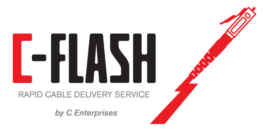
As of January 2017, the Telecommunications Industry Association (TIA) and the International Electrotechnical Commission (IEC) recognize OM5 as within their standards. OM5 is the official designation of a recently released wideband multimode fiber medium. OM5 specifies a wider range of wavelengths to support wave division multiplexing (WDM) technology. It is fully backwards compatible with existing fiber specifications. Learn more about OM5 and how its recognition may affect the cable assembly industry.
What You Need to Know About OM5
Wideband multimode fiber (WBMMF) is a TIA development that can handle increasing data rates and infrastructure necessary to support higher bandwidth. WBMMF is a potential alternative to multimode fiber cables, which can no longer support the data transmission speeds needed to meet the higher demands of today’s data centers. As bandwidth requirements continue to increase, it’s becoming more expensive for optical fiber cabling systems to support Ethernet speed migration. Thus, OM1 and OM2 multimode fiber cables – originally created to support fast Ethernet – have become obsolete in new installations.
The answer to this dilemma may be in OM5. In October 2016, an overwhelming majority of nations chose OM5 as the official designation for cabling containing WBMMF in the upcoming edition of the ISO-IEC 11801. The OM5 cable has the ability to increase transmission speeds or reduce fiber strands by a factor of four, thanks to WDM. For example, while standard OM3 or OM4 multimode fibers require eight fibers via 100GBASE-SR4 for 100 gigabit speeds, OM5 fiber links could use two-fiber 25 gigabit channels on four different wavelengths for 100 gigabit speeds.
OM5 cabling is completely compatible with OM3 and OM4 cabling, and it supports all legacy applications equally as well as OM4. OM5 enables support of emerging SWDM (shortwave wavelength division multiplexing) applications that allow the use of two fibers rather than eight to transmit 40 and 100 Gb/s. With OM5, users can reduce fiber counts for higher speeds. OM5 has approval for use around the world in multiple enterprise environments, from data centers to college campuses.
The Future of Fiber Cabling
OM5 presents a potential breakthrough in how the world networks. Now that the TIA and IEC officially recognize OM5, users can enjoy at least a fourfold increase in data rate or a fourfold decrease in the number of fibers necessary to achieve a specific data rate. Instead of transmitting four optical signals via four separate fibers, OM5 delivers signals down a single fiber over four separate operating windows.
After a 20-month study by a special TIA taskforce, OM5 officially represents the new fiber cable standard. What does this mean for industries around the world? While there are no applications being developed within the Institute of Electrical and Electronics Engineers (IEEE) to use this medium, companies can expect to see OM5 cabling implemented in more applications in the future. Be aware, however, that OM5 carries a significant cost increase over OM4 cabling. This cost premium will apply to future transmission equipment.
IEEE P802.3cd will be released in 2018, demonstrating the institute’s commitment to the development of new, higher-capacity cabling over OM3 and OM4 multimode fibers. OM5 may be poised to make changes in the cabling industry, but, as of now, the experts at C Enterprises continue to recommend deployment of OM3 and OM4 MPO/MTP connectivity for seamless migration to future applications. We make this recommendation in light of pricing premiums and the still-uncertain applications of OM5.
To view our line of tested and proven OM3 and OM4 fiber cables, visit the C Enterprises website. We produce fiber optic and copper cables our clients can trust. For more information about OM5 and its impact on the industry, stay tuned for future news releases from C Enterprises.







